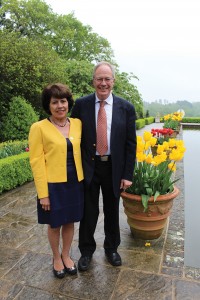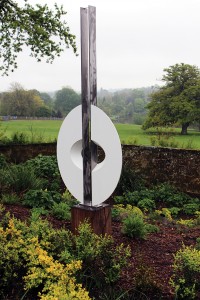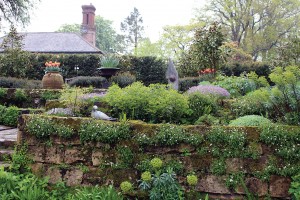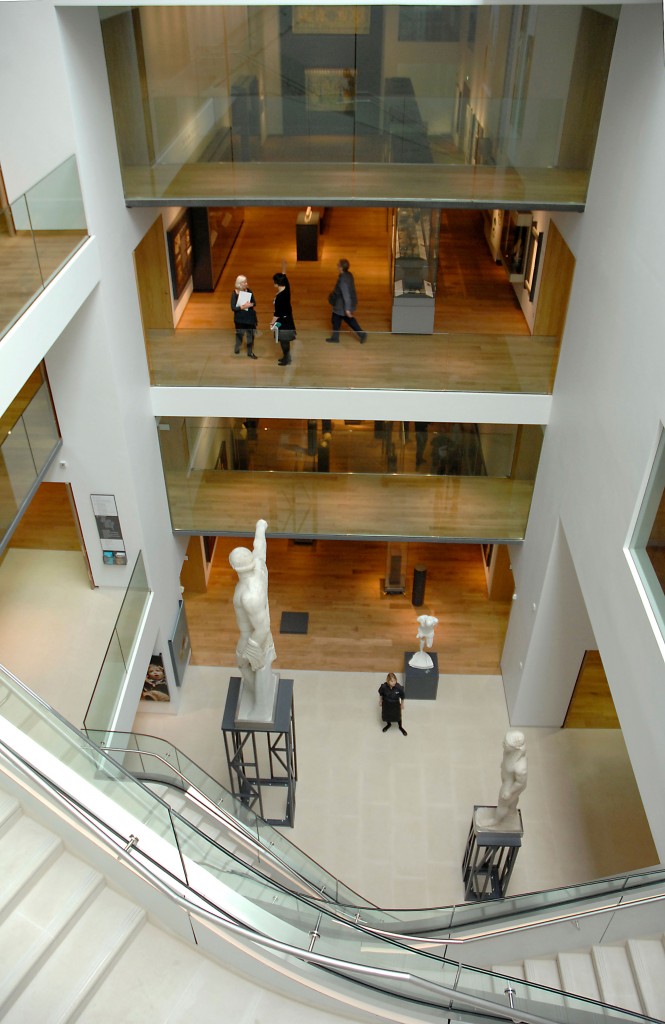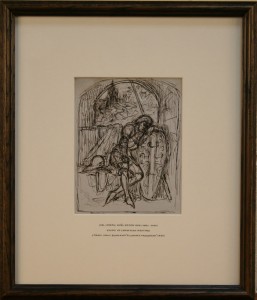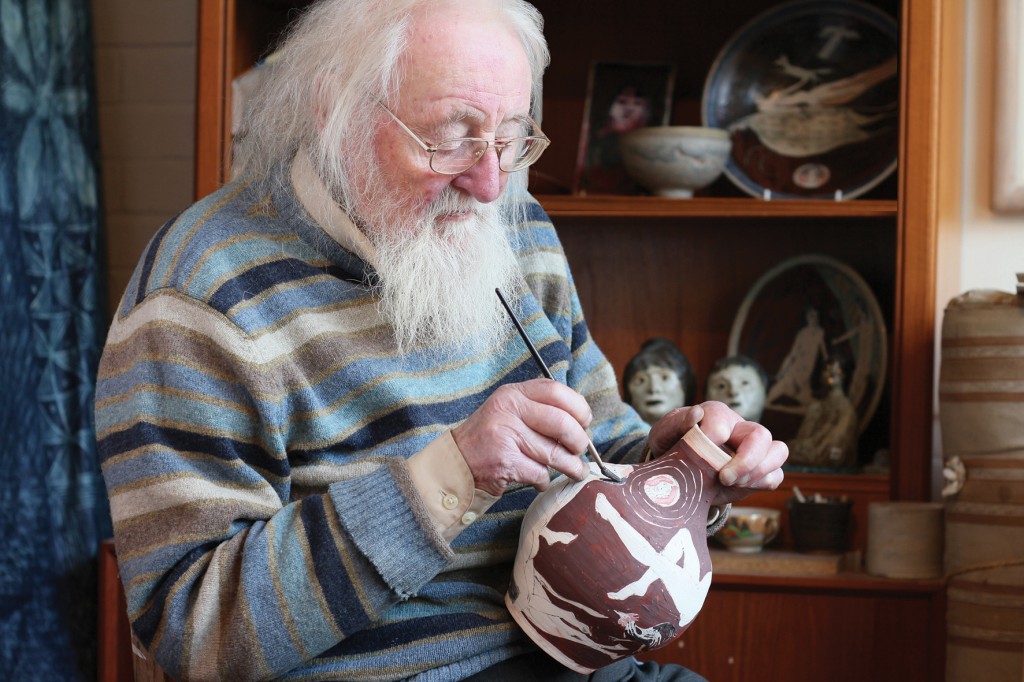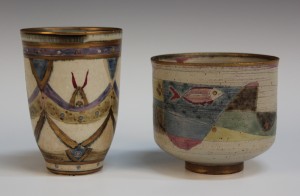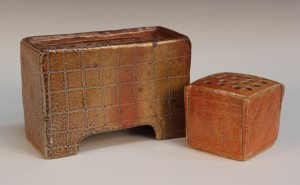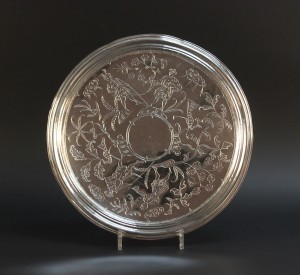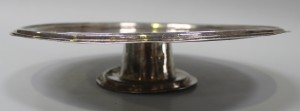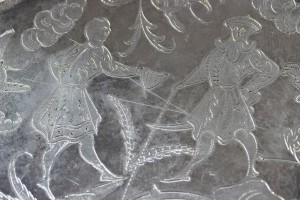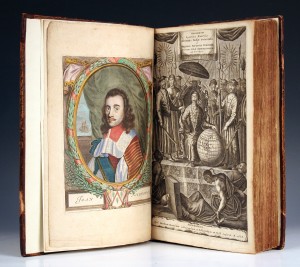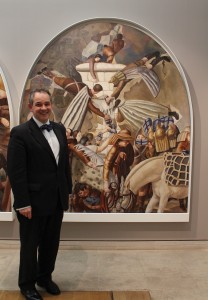
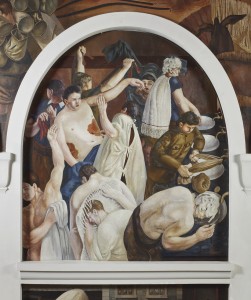
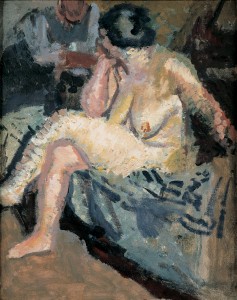
This week I am returning to Pallant House Gallery, Chichester, to once again see the outstanding ‘Stanley Spencer: Heaven in a Hell of War’ exhibition, which is now in its final two weeks. The paintings from Sandham Memorial Chapel at Burghclere have been loaned by the National Trust while restoration work to the fabric of the chapel has been undertaken. They will soon be returning to their permanent home. Other rarely seen works by Spencer also form part of this show.
The patron and art critic Clive Bell, of Bloomsbury and Charleston House fame, published a book titled ‘Art’ in 1914. In it he espoused the importance and qualities of the early Italian ‘primitives’, as they were then described. He wrote: ‘Go to Santa Croce or the Arena Chapel and admit that if the greatest name in European painting is not Cézanne, it is Giotto.”
Stanley Spencer too was inspired by the work of the 14th century Quattrocento artist Giotto Di Bondone and it is no accident that the scheme of Sandham Memorial Chapel was based upon Giotto’s Arena Chapel in Padua. In viewing Spencer’s art, the qualities of the aesthetic and the religious are often held in tension. This shared heritage inspires a vital, living experience. Painted from memory between the wars, they are considered by many to be his finest work. The paintings provide a particular and strong articulation of hope, forgiveness and resurrection and are alive with Christian allegory. Take, for example, ‘Ablutions’, which shows the wounded being tended, cleaned and dressed. It is reminiscent of Christ’s washing of the disciples’ feet at the Last Supper. These images leave us in no doubt as to the uniqueness and quality of Spencer’s gifted artistic voice.
In 1912 Clive Bell selected Stanley Spencer’s ‘John Donne Arriving in Heaven’ for the second Post-Impressionist exhibition at the Grafton Galleries in London. Other exhibitors included Matisse and Picasso. Clive Bell frequently visited Burghclere to see Spencer at work. Lively intellectual debates defined life at Charleston House; perhaps Clive Bell’s thinking and his visits to Burghclere brought influence to his wife, Vanessa Bell, and Duncan Grant’s wall paintings at St Michael and All Angels, Berwick, Sussex.
Before I leave the gallery, there is just time to see another exhibition, ‘Artists’ Studies: From Pencil to Paint’, and I find myself captivated by Walter Sickert’s ‘Jack Ashore’. This remarkable oil on canvas displays the artist’s particular gift for composition and tone and the later pencil sketch of the same title is revealing of Sickert’s working method. Painted in 1912-13, it reminds me of the important place Sussex occupies in Modern British Art history. Between 16th December 1913 and 14th January 1914, the Brighton Art Gallery became London-by-the-Sea. The Camden School, under the presidency of Spencer Frederick Gore, was invited to select the work for the exhibition. It was a group of artists always given to division and it operated both as the London Group and the Fitzroy Street Group. Walter Sickert had acknowledged that scope for ‘the free expression of newer artistic thought’ was needed. The exhibition was titled ‘English Post-Impressionists, Cubists and Others’. The first two rooms contained work by those in the more traditional camp of Gore, Gilman and Pissarro. Wyndham Lewis wrote the introduction for the third ‘Cubist Room’ room. Always influenced by Picasso, Lewis embraced Futurism and Cubism.
‘Stanley Spencer: Heaven in a Hell of War’ has been one of the artistic highlights of the year. I am delighted that Toovey’s headline sponsorship of this exhibition, together with support from the Linbury Trust, has made it possible for such an important show to come to Sussex. The paintings have gifted the galleries at Pallant House with a quality of the sacred. Whether you are visiting for the first time or revisiting, this intimate exhibition really has a power to move as we share Spencer’s memories and his pictures allow us to inhabit this very personal story. The exhibition runs until 15th June 2014. For more information go to www.pallant.org.uk.
By Revd. Rupert Toovey. Originally published on 28th May 2014 in the West Sussex Gazette.
Stanley Spencer images © the estate of Stanley Spencer, 2013. All rights reserved DACs, National Trust Images/John Hammond
